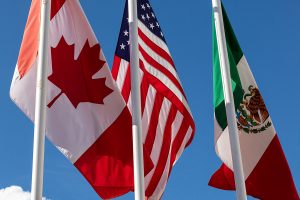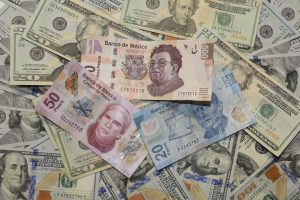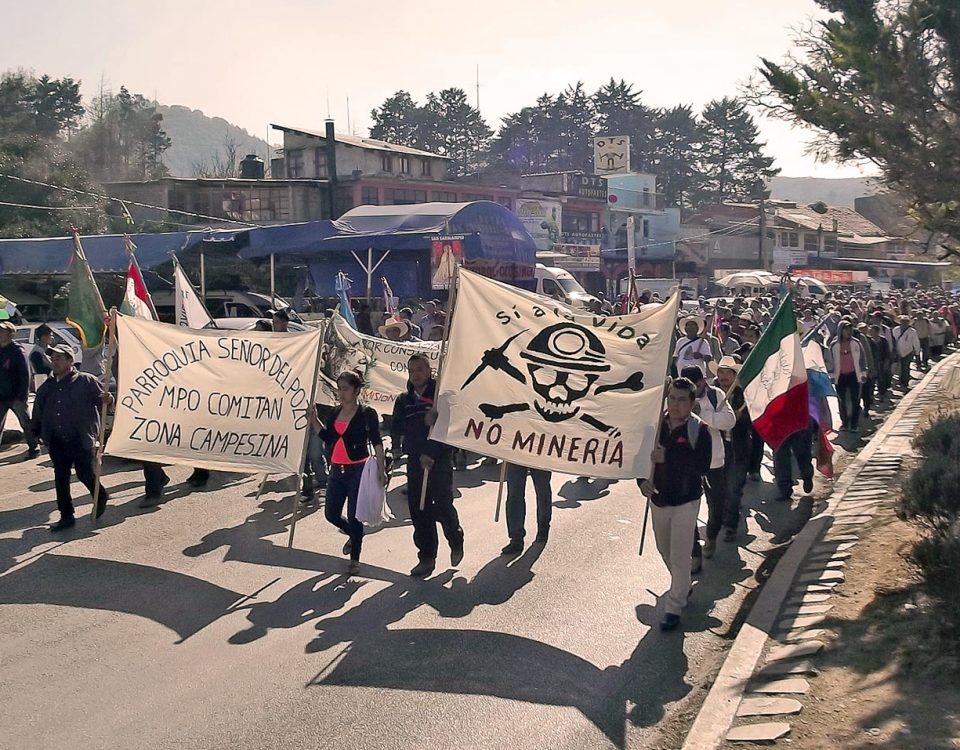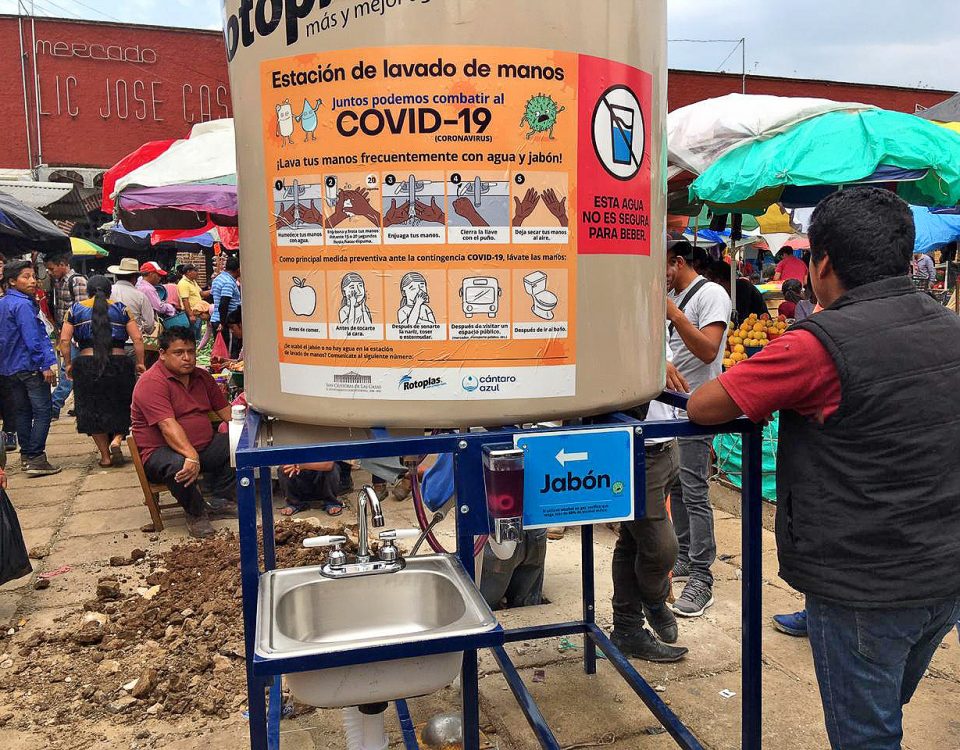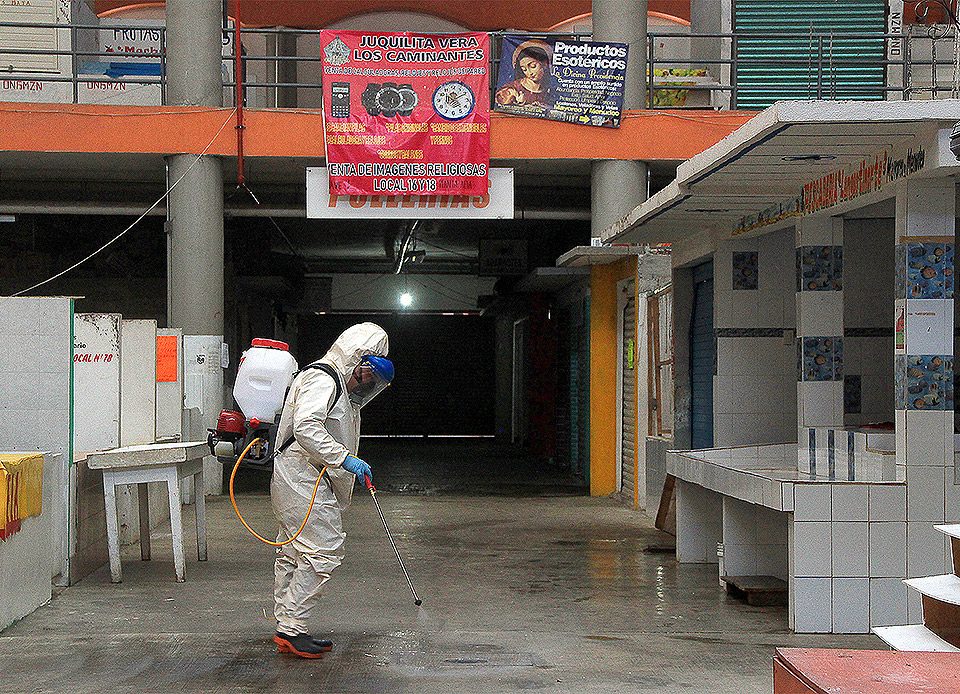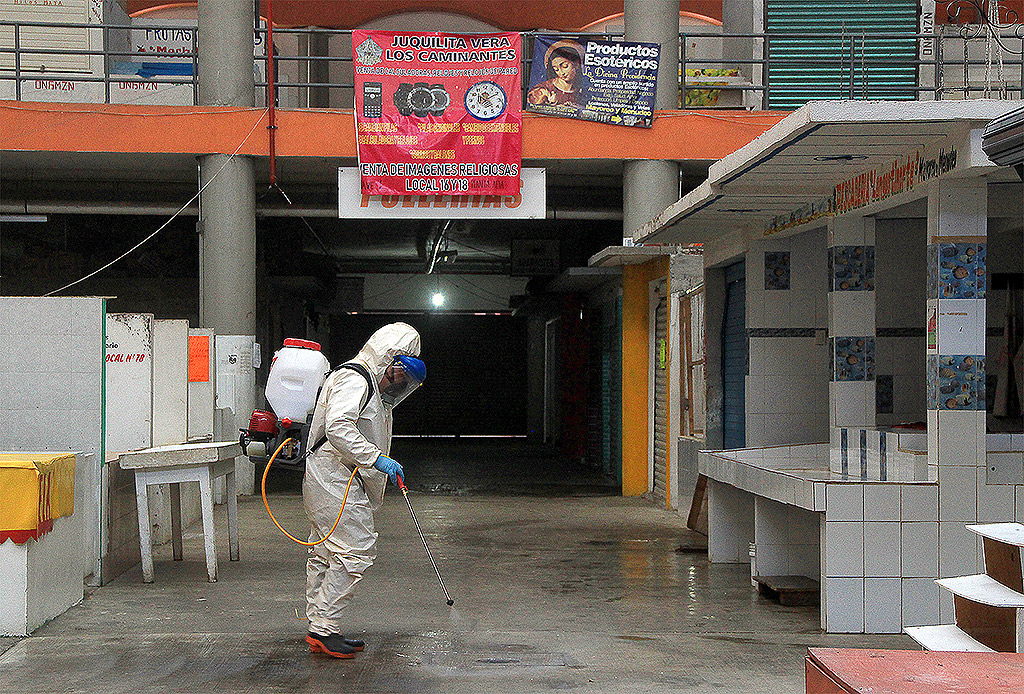
LATEST: Mexico continues to rise in the ranking of the countries most affected by COVID-19
04/09/2020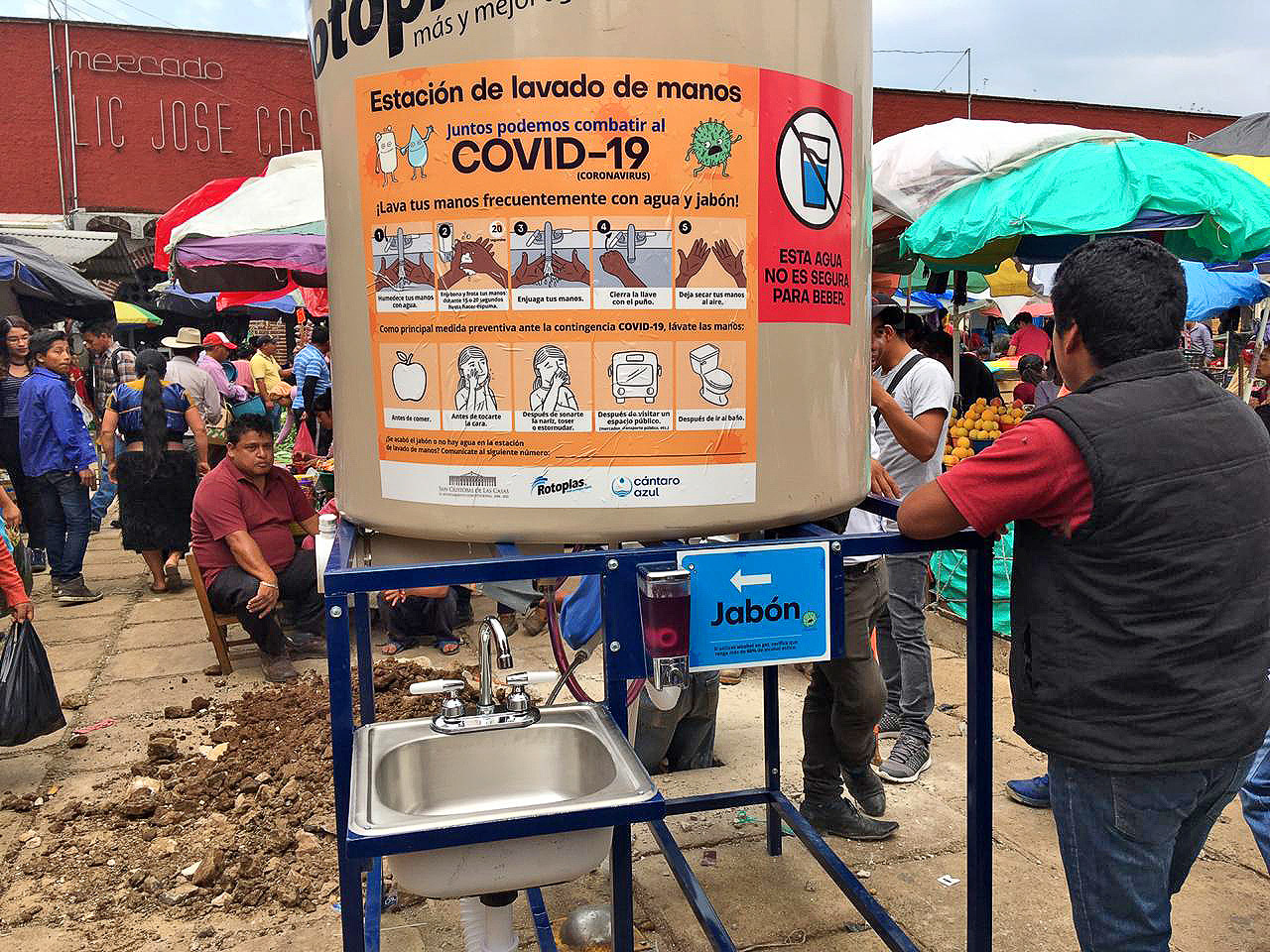
ARTICLE: Expressions of Solidarity in Chiapas in the COVID-19 Pandemic
04/09/2020On July 1st of this year, the free trade agreement between Mexico, the United States and Canada, known as USMCA, came into force, an update of the North American Free Trade Agreement (NAFTA) that was signed 26 years ago.
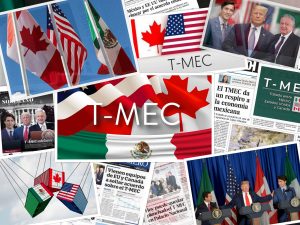
New Trade Agreement between Mexico, United States and Canada, USMCA, came into effect on July 1st, 2020 © SIPAZ, Collage
The updated treaty contains 12 more chapters than its previous version, going from 22 to 34. It seeks to strengthen the automobile industry, with changes in the manufacture and commercialization of automobiles; stimulate the textile sector, making the manufacturing process more competitive; as well as the development of a more liberalized agriculture, among other things[1]. It includes new laws for digital commerce, environmental rights and labor rights, reaffirms property rights and introduces new laws on intellectual property, among others[2]. The treaty, which came into force in the middle of the COVID-19 pandemic, has received both criticism and applause, depending on the sectors and actors.
The trip to the White House
In the midst of the pandemic, and on his first trip abroad, AMLO flew to the White House in Washington D.C, USA, to meet and sign the treaty together with his US counterpart, Donald Trump. The third member of the treaty, Prime Minister of Canada Justin Pierre James Trudeau, was conspicuous by his absence.
AMLO was criticized and questioned over his trip, as well as for his behavior during the visit, considering that it was seen as a weakness in the face of economic intimidation and the racist pronouncements of Donald Trump. Despite harsh words towards each other during their respective campaigns, they met on July 7th, 2020 to celebrate the agreement[3], which, amid smiles and friendly words, marked the start of the implementation of the trade agreement. Given the criticism, AMLO said that “I want to tell the people of my country that since we took office, there has been a respectful relationship, not only with the Mexican government but also with Mexicans[4].”
From NAFTA to USMCA
In the 90s, the United States, Mexico and Canada decided to form the largest free trade area in the world through the development and implementation of the North American Free Trade Agreement (NAFTA), with the aim of contributing to economic growth and to raise the standard of living of the population of the three member countries.
At the time there were several criticisms and concerns about the treaty, one of the most notable being the uprising of the Zapatista Army of National Liberation (EZLN), in Chiapas.
The treaty, which entered into force on January 1st, 1994, was promoted by the PRI government of President Carlos Salinas de Gortari, as part of the neoliberal economic strategy that would “save” Mexico in socioeconomic terms. To make the economy flourish, which had hardly grown since the 1970s, they broke the tradition of domestic investment and opened the doors to foreign capital[5].
Certainly, with NAFTA, international participation in Mexican trade has clearly increased, and so has the flow of money. However, the simple growth of these indicators does not imply an improvement in social conditions. In fact, studies show that inequality has increased significantly during the last 25 years: fewer people have more capital, while the majority of Mexicans have less, due to an economic strategy that focuses on only one of the two elements, production and not distribution[6].
In 1992, an urban family (five people) needed to earn 3.7 minimum wages to survive. In 2014, it needed 5.3. Furthermore, the increase in the minimum wage has not implied an increase in purchasing power due to inflation. Therefore, NAFTA has not meant wage increases, as Salinas had promised.
The update of the agreement was an electoral campaign promise of the current president of the United States, Donald Trump, in 2016. On coming to power, he called on his counterparts to renegotiate the old NAFTA, and threatened to cancel it if it was not done. They began these negotiations with the previous Mexican government, that of President Enrique Peña Nieto, of the Institutional Revolutionary Party (PRI).
On November 30th, 2018, in Buenos Aires, Argentina, the first signing of the new treaty, USMCA, was carried out by the representatives of the three member countries. A day before the inauguration of Andres Manuel Lopez Obrador in Mexico, who ten days later ratified and celebrated the new modifying protocol of the USMCA.
Wager to make the economy flourish
The President of the Republic Andres Manuel Lopez Obrador, considers that this new treaty is a source of hope that will open many opportunities for the country, since it will allow it to maintain economic and commercial relations with the most important and strongest market in the world.
“This for Mexico will mean investment, that is, foreign investment will continue to arrive. It is very important that the treaty enters into force and very timely, because we are about to get out of the pandemic and we need to reactivate the economy, get out of the economic recession, out of the fall that the coronavirus produced in the world economy[7],” AMLO said.
Andres Manuel Lopez Obrador also positively views that direct ownership of oil and hydrocarbons has been reaffirmed in the country, which guarantees Mexico’s independence and sovereignty in energy matters, both on land and at sea. Furthermore, through the enforcement of trade and customs laws with a new section against fraud and smuggling, it is expected that the costs of customs operations and corruption will be reduced.
However, the International Monetary Fund (IMF) does not have the same expectations towards an economic recovery in Mexico, as a consequence of the entry into force of the treaty[8]. It argues that it will not be enough to compensate for the contraction of investment in the Mexican economy[9]. According to the Institute for Industrial Development and Economic Growth (IDIC in its Spanish acronym), the gradual reopening of the economy and the entry into force of the USMCA will only reduce the fall of the Mexican productive system and the precariousness of the labor market, but it will not be enough to raise the social welfare of the poorest Mexicans. The IDIC analysis says that the treaty will most likely bring benefits, but these will depend more on national policies[10].
On the other hand, what even the critics have commented on with hope, has been Chapter 23 on labor rights, which will help improve the average salary in the country. This and the minimum wage have worsened in recent decades, not in their amount but in the associated purchasing power. With the entry into force of the new treaty, the State is obliged to meet certain requirements that would imply an improvement[11].
The National Human Rights Commission (CNDH in its Spanish acronym) expressed its special approval about said chapter, which establishes definitions, recognitions and obligations in the matter of human trafficking and exploitation of persons. It specifically refers to the effective abolition of child labor and the elimination of all forms of forced or compulsory labor[12].
However, with the previous treaty the promises were the same, but the reality was the opposite. In addition, it is very different to have a federal law and to observe its implementation in practice at local level, so the strongest critics think that even the most positive aspect of the USMCA may not benefit the population.
The lack of progress in labor reform in Mexico is worrying congressmen in the neighboring country who, through a letter addressed to the president, expressed that they consider that a series of changes that they expected in terms of union democracy have not yet taken place, focusing on violence (even including the extreme case of death), against people who try to improve their working conditions[13]. With the USMCA, a rapid response mechanism is established, which within a period of six months would allow a company to be directly sanctioned with tariffs, fines or embargo, for not complying with the right to freedom of association and collective bargaining. This is another possible advance that remains to be seen if it can be successfully implemented.
The treaty, which is valid for 16 years and, unlike the previous one, must be reviewed every six years, has been signed by international organizations for helping to dispel uncertainty by giving confidence to investors who want to do business in the three economies. While some sectors have criticized it for violating human rights and even the Mexican constitution, as it has generated concerns on the part of national and international institutions in different areas.
Digital rights above human rights
The reforms in Chapter 20, on Intellectual Property, have been questioned for violating human rights and being unconstitutional by several civil organizations, while other voices say that it promotes and protects sales and that it strengthens respect for cooperation in cybersecurity. The most notable reforms are the Federal Copyright Law and the Federal Criminal Code reform in relation to this issue, which were approved by the Mexican Chamber of Deputies and Senate days before the treaty came into force.
Through the Federal Copyright Law, a private Internet censorship mechanism is established, known as “notification and withdrawal”, which obliges online service providers to remove any publication or content from their users when a person alleges that your copyright is violated.
“By allowing any individual to censor expressions online, without there being a legal process to determine whether the expression effectively constitutes an infringement of copyright, an extrajudicial mechanism of censorship is established clearly in violation of the right to freedom of expression … [14]“, civil organizations claim.
The reforms to the Federal Penal Code imply that it will be illegal and subject to fines and imprisonment, whoever evades/breaks digital chains of a technological or digital device, something that professionals have to do to carry out their work or private persons to adapt their machines according to their needs. The law also implies avoiding independent repairs to various devices, thus allowing companies to collect data and limit the scope for action by critics and competitors[15].
These risks will arise in a country where the existence of free expression is already highly questioned due to the high levels of violence against journalists, which increases concern that these reforms will put journalism in Mexico at even greater risk.
The way the decisions were made has also been criticized. “Mexico has voted for the strictest laws, compared to the other two parties, without exploring how to respond in the most appropriate way to the needs of the Mexican population and the values embodied in its Constitution, they do not take into account the negative impacts on the freedom of expression, nor the standards on content restriction based on international human rights law [16]”, denounces the organization Digital Rights. Civil, national and international organizations called on the National Human Rights Commission (CNDH in its Spanish acronym) to challenge the constitutionality of these reforms, which it did on August 3rd[17].
Mexico is…transgenic corn?
With the approval of the USMCA, Mexico was forced to sign and become part of the act or agreement of the International Union for the Protection of New Varieties of Plants (UPNVP) 1991, which, paradoxically, could open the door even more to the arrival of transgenic seeds.
The 1991 UPNVP Convention is “contrary to all legal logic, because a small group of large producers -mainly corporations- at the international level adjudicates to itself the prerogative of appropriating plant varieties excluding the possibility of freely using them to other people and communities that are dedicated to agriculture and that are the ones who domesticated them and have bequeathed them to humanity”, explains the Network for Defense of Corn[18].
Thanks to social pressure against transgenic corn in Mexico for seven years, the judiciary granted a precautionary measure that, since 2013, prohibits issuing permits to plant transgenic corn. Grains and seeds will only be imported from countries that do not grow genetically modified organisms (GMOs), or under certain specific circumstances[19]. Today with the entry of the USMCA, that has changed.
There are many critical voices against transgenic corn, considering that it represents a threat to biodiversity by genetically contaminating other varieties of the same species that are in the vicinity, cases of which there have been in Mexico. Beyond the risk of extinction of other varieties of creole corn that exist, there are also critical voices over changes in nutrition in transgenics compared to native seeds[20].
Threats to the environment
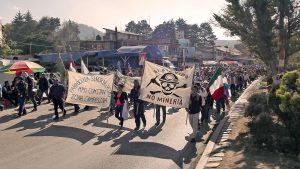
Rejection of mining, pilgrimage of Believing People in San Cristobal de Las Casas diocese, January, 2020 © SIPAZ
The updated treaty is officially sold as a positive step for the environment, with new chapters on the subject shared among the three countries. However, it has been criticized as two-faced when taking measures for the environment, but not prohibiting mining in Protected Natural Areas, for example.
Since mining activity was opened to private initiative and large transnationals within the framework of the Mining Law (1992) and even more so with NAFTA, the sector is currently dominated by foreign players, mainly projects of the other two members in the treaty – United States and Canada. The current extractive mining policy in the new USMCA reinforces the commercial and investment policy imposed by the previous treaty. It has been shown that mining exploitation has no benefits for the population in mining areas: the 15 main mining municipalities in the north and south such as Cananea live in very poor social conditions, in which at least 13 are in poverty levels below the national poverty average, seven exceed the extreme poverty level, and ten communities lack basic services, reports Aleida Azamar, ecological economy researcher at UAM Xochimilco[21].
In addition, it is worrying to take into account the report that Global Witness recently released, which demonstrates the high figures of attacks against environmental defenders and that, specifically, shows how the mining industry bears responsibility for 50 murders of the 212 registered in 2019[22].
In Chapter 24, it is stated that companies must adopt and implement voluntary best practices of corporate social responsibility that are related to the environment. Likewise, the use of flexible and voluntary mechanisms to protect the environment and natural resources is mentioned. However, expressions such as voluntary and flexible are used, and there is nothing along the lines of obligation[23].
“These norms and public policies disproportionately favour and protect the mining investor, nullify the rights of the population, inhabitants and owners of the territories permanently affected by these activities, and the populations supposedly beneficiaries and dependent on the environmental services provided by these territories, as well as the workers themselves who, due to economic necessity or due to coercion or submission by armed groups operating in the context of mining companies, participate in extraction activities, while progressively being stripped of the value of their territory, work, health, their community life and their natural assets[24]“, REMA organizations state.
It’s not just about mining companies. For example, article 24.7 recommends the assessment of environmental impacts according to the laws of each country, ensuring that the information reaches the public. It is limited when in the experience of Mexico, for example, with the Maya Train, questions have arisen from the UNHCHR and human rights organizations when there has not been an Environmental Impact Statement (EIS), and the consultations carried out did not provide information sufficient or adequate, as well as guidelines, such as those of Convention 169, on the matter were not respected[25].
In addition, the USMCA makes it possible for US companies to sue the Mexican government in supranational courts, but not the other way around, if they consider their investments affected by limitations due to environmental restrictions, among other things.
The implementation of the new treaty and its effects will take time, but, right now, there are many differing opinions about who will really be the beneficiaries.
References:
- [1] Revista Énfasis, (Julio 2020), Arranca T-MEC en panorama internacional adverso, páginas 12-13. Recuperado el 2 de agosto 2020
- [2] Gobierno de México (2020) Textos finales del Tratado entre México, Estados Unidos y Canadá (T-MEC). Recuperado el 10 de agosto 2020
- [3] Rivers, Matt. (8 de julio 2020). CNN. ¿Por qué Trump? ¿Por qué ahora? Lo que hay detrás del gran viaje del Andrés Manuel López Obrador a EE.UU. Recuperado 7 de agosto 2020.
- [4] ibid.
- [5] Martínez Lutteroth, Bernardo (2018) Análisis Plural. Los efectos y las limitaciones del TLCAN. Recuperado 12 de agosto 2020
- [6] Ibid.
- [7] Forbes. (1 de julio 2020), ¿Qué es el T-MEC y por qué es importante para México?. Recuperado 7 de agosto 2020.
- [8] El Financiero, FMI: (29 de junio 2020) T-MEC no solucionará la pérdida de confianza. Recuperado 10 de agosto 2020.
- [9] Ibid.
- [10] La Voz de la Industria (2 de julio 2020.) Una profunda ¿y larga? recesión: revertir la caída histórica del Indicador Coincidente (Vol. 8, N°222.) Recuperado 5 de agosto 2020.
- [11] Ramírez, Erika (13 de julio 2020) Revisa Contralinea. Tmec favorecerá mejorar el salario en México: AMLO. Recuperado 5 de agosto 2020.
- [12] CNDH. Comisión Nacional de los Derechos Humanos. (2020) Con la entrada en vigor del T-MEC, la CNDH destaca la relevancia del capítulo 23 referente a la abolición efectiva del trabajo infantil y la eliminación de todas las formas de trabajo forzoso u obligatorio. Recuperado 4 de agosto 2020.
- [13] Forbes. (30 de junio 2020) Entrada en vigor del T-MEC reaviva preocupación sobre derechos laborales. Recuperado 5 de agosto.
- [14] R3D. Red en Defensa de los Derechos Digitales. (1 de julio 2020) #NiCensuraNiCandados: Condenamos la aprobación de reformas que establecen mecanismos de censura en Internet y criminalizan la elusión de candados digitales. Recuperado 10 de agosto 2020.
- [15] Derechos Digitales (DD) (24 de julio 2020) La implementación de las disposiciones de propiedad intelectual del T-MEC por parte del Congreso mexicano amenaza la democracia y los derechos digitales. Recuperada 28 de julio 2020).
- [16] Ibid.
- [17] CNDH. Comisión Nacional de los Derechos Humanos. (7 de agosto 2020) PDF. CNDH presentó 46 acciones de inconstitucionalidad ante la Suprema Corte de Justicia de la Nación. Recuperada 10 de agosto 2020.
- [18] Red en Defensa del Maíz. (29 de junio 2020) Comunicado contra el intento de aprobar una reforma a la Ley Federal de Variedades Vegetales. (LFVV) en México. Recuperado 10 de agosto.
- [19] ANEC. Asociación Nacional de Empresas Comercializadoras de Productores del Campo, (7 de julio 2020) Urge Decreto Presidencial por un México Libre de Transgénicos. Recuperado 5 de agosto.
- [20] Fernández Vázquez, Eugenio. (22 de junio 2020) Pie de Página. Opinión: La embestida de las transnacionales contra los campesinos y la biodiversidad. Recuperado 5 de agosto 2020.
- [21] Olvera Dulce. (16 de julio 2020) Sin embargo. El T-MEC mantiene los privilegios de las mineras y deja abierta la puerta a transgénicos: analistas. Recuperado 10 de agosto 2020.
- [22]Global Witness.(29 de julio 2020) Informe: Defender el Mañana. Recuperado 5 de agosto 2020.
- [23] Gobierno de México (2020) Textos finales del Tratado entre México, Estados Unidos y Canadá (T-MEC). Capítulo 24. Recuperado el 10 de agosto 2020. –
- [24] Red Mexicana afectada por la Minería, REMA; (7 de julio 2020). Con el TMEC se profundiza el modelo extractivo minero. Recuperado 4 de agosto 2020.
- [25] Naciones Unidas Derechos Humanos. ONU-DH México. 19 de diciembre 2019. ONU-DH: el proceso de consulta indígena sobre el Tren Maya no ha cumplido con todos los estándares internacionales de derechos humanos en la materia. Recuperado 18 de agosto 2020.

